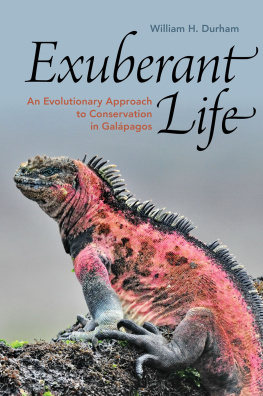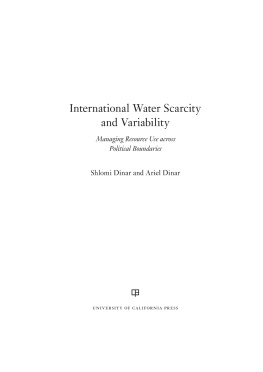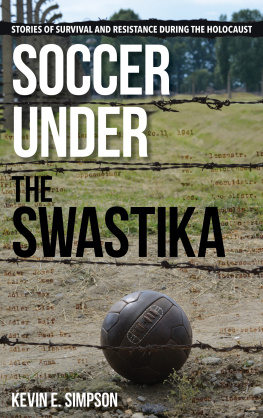Preface
In both the academic literature and the popular press, the so-called Soccer War between El Salvador and Honduras in 1969 is cited as a classic illustration of the problems of overpopulation. The conflict has been called a demographic war and a veritable population explosion. It has even been argued that the Soccer War represents in microcosm what may be in store for a world whose human population continues to increase at a rapid rate.
Despite the importance attached to the conflict as an example of population pressure, there has been no systematic attempt to evaluate the underlying assumptions of the explanation. The massive emigration of Salvadoreans to Honduras, for example, is widely conceded to have precipitated the war, but no one has demonstrated that this emigration was wholly or even chiefly a response to population pressure. Similarly, although it has been argued that the stream of Salvadoreans added significantly to Hondurass own population problems, few authors have actually assessed the impact of the immigrants at the local or national level. An evaluation of these assumptions is the goal of this study.
My analysis is perhaps best described as a case study in human ecology-broadly defined as the study of the patterns and processes of human adaptation to environments. Because the patterns and processes of human adaptation in this world are not cleanly compartmentalized, studies in human ecology are legitimately approached from any number of disciplinary perspectives, including anthropology, population biology, sociology, and demography.
This study is no exception. On the national level, I analyze census data and estimates of population size, farmland, and agricultural production using a methodology derived from demography and population biology. My purpose in these sections is to show what inferences can and cannot be drawn from aggregate data concerning the causes and effects of the Salvadorean emigration to Honduras. On the local level, I employ a methodology based on participant observation and household surveys as used in anthropology and sociology. The local-level studies provide answers to different kinds of questions than can be asked of the available aggregate data. They are an important supplement to understanding the significance of the Salvadorean migration. But as I hope to show, information from both sources is crucial to understanding the origins of the conflict between El Salvador and Honduras.
It is appropriate to make a few comments at the outset about the reliability of the national-level data used in this study. In both countries my data were compiled from official publications of the Census Bureaus and Ministries of Agriculture. These data, I believe, can be taken as reasonably accurate for several reasons. First, both countries have relatively small land areas, and each is further subdivided into more than 260 administrative and census-tract units. Logistics and scale therefore present fewer problems in the collection of national data than in other Latin American countries. Second, both countries have unusually comprehensive historical records, with estimates of population, commerce, and agriculturein some cases yearlydating back to 1900. El Salvador in particular had the advantage of some able early statisticians, under whose leadership the Census Bureau conducted its first extensive and systematic population census in 1892 and founded its own Department of Agricultural Statistics in 1929. Third, both countries have received international assistance with their national censuses, including some post-censal evaluation and error analysis. In one such follow-up study of Hondurass Second National Agricultural Census (Zobel 1967), the number of farms in a sample municipality was reported to have been underestimated by 7.4 percent, and the size of the farms by an average of 3.4 percent. Further, according to this study, the degree of underestimation was noticeably greater for the larger farms. As may be seen below, estimation errors like these, though relatively minor, would make my analysis a conservative appraisal of the land problems of these countries. Finally, I have tried wherever possible to incorporate additional controls and consistency checks in the data. For example, both countries have changed the census definitions of urban, rural, and economically active population several times in the last 50 years. Fortunately, municipal-level figures were available, so that I was able to recalculate these statistics in a consistent fashion for the census years.
For the analysis itself I have relied heavily on a graphical presentation of the data. This procedure has as one advantage the simplification and condensation of sometimes ponderous quantities of statistics. Moreover, a graphical presentation has the advantage of permitting less concern with absolute values than with major trends in important variables. This technique lends itself particularly well to the analysis of dynamics and the change of variables in a historical perspective.
The study focuses on the period from 1892 to 1971. The year 1892 is an appropriate starting point for several reasons. First, that year saw the first population census in El Salvador that was systematic and thorough enough to enable a reliable estimate of the countrys agricultural population. Second, it was near 1892 that El Salvadors population regained its pre-conquest level and began growing at the dramatic rates that have continued to the present. Indeed, some authors have argued that El Salvador has been overpopulated since that time (e.g., Vogt 1946). Third, the year 1892 approximately coincides with the onset of major changes in land tenure in rural El Salvador wrought by the Liberal Reform measures of the 1880s. And, finally, 1892 also coincides with the beginning of large-scale commercial agriculture in Honduras, the so-called Banana Boom, that was to have a lasting influence on both the land tenure there and the Salvadorean immigration. The data analysis extends through 1971, which is not only the year of the most recent census in El Salvador, but also a full two years after the Soccer War. Although this study is primarily concerned with population and resource dynamics preceding the conflict, I have attempted to bring the reader up to date with a brief account of postwar trends in the concluding chapter.
Many people have contributed to this study in every stage of its development. I particularly wish to thank Kent Flannery, Brian Hazlett, Daniel Janzen, and Roy Rappaport for their comments and assistance as members of my doctoral committee. John Vandermeer, who chaired the committee, has given strong support to my interest in human ecology from the beginning, and that support has been much appreciated. I give special thanks also to Bernard Nietschmann for his help in the pre-fieldwork stages of this project. I would also like to express my gratitude to Peggy Barlett, Loy Bilderbach, Carlos de Sola, Kathryn Dewey, Paul Ehrlich, Galio Gurdian, Reynaldo Martorell, Elizabeth Perry, and the members of the Stanford-Berkeley Seminar on Historical Demography for their helpful comments on this research. In addition, I thank Mark Lincoln and Barbara Mnookin for their help in preparing the final manuscript. The Oxford University Press and David H. Browning have graciously permitted me to reproduce the map on p. 41; I thank them both.











